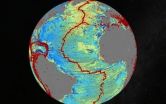(Press-News.org) Bottom Line: The effectiveness of a treatment to reduce blood clots among otolaryngology patients admitted for surgery appears to differ based on patient risk and the procedure.
Author: Vinita Bahl, D.M.D., M.P.P., of the University of Michigan Health System, Ann Arbor, and colleagues.
Background: Blood clots (venous thromboembolism [VTE], which includes deep vein thrombosis [DVT] and pulmonary embolism [PE]) are common complications in surgical patients. Treatment (primary thromboprophylaxis with anticoagulant medication [chemoprophylaxis]) can help reduce the incidence of VTE in surgical patients. But treatment should be considered in light of the risk of VTE and bleeding complications. The American College of Chest Physician's guidelines for thromboprophylaxis do not specifically apply to otolaryngology. The authors sought to examine the effectiveness and safety of VTE chemoprophylaxis for otolaryngology patients admitted for surgery.
How the Study Was Conducted: The study included 3,498 patients treated by surgeons at an academic medical center between September 2003 and June 2010. The authors analyzed the incidence of VTE and bleeding complications within 30 days after surgery.
Results: Of the 1,482 patients who received VTE chemoprophylaxis, 18 (1.2 percent) developed a VTE compared with 27 of 2,016 patients (1.3 percent) who did not receive treatment. Patients with higher scores on a risk assessment were less likely to have a VTE with perioperative chemoprophylaxis (5.3 percent vs. 10.4 percent). Of the patients who underwent treatment, 3.5 percent developed a bleeding complication compared with 1.2 percent of patients without treatment. Among patients who underwent free tissue transfer, treatment decreased the incidence of VTE (2.1 percent vs. 7.7 percent) and increased bleeding complications (11.9 percent vs. 4.5 percent). In all other patients, treatment did not significantly influence the likelihood of VTE (1 percent vs. 0.6 percent) or bleeding (1.5 percent vs. 0.9 percent).
Discussion: "Results from this study provide the basis for future research. ... An examination of additional benefits and harms of VTE prophylaxis is warranted, including its impact on mortality due to PE. Free tissue transfer patients merit special analysis when developing recommendations for VTE prophylaxis because of the high risk of both VTE and bleeding. ... Finally, further tests of the incidence of VTE by risk level and of the effectiveness and safety of chemoprophylaxis should be conducted for other otolaryngology patients, in populations large enough to produce sufficiently powered analyses."
INFORMATION:
(JAMA Otolaryngol Head Neck Surg. Published online October 2, 2014. doi:10.1001/.jamaoto.2014.2254. Available pre-embargo to the media at http://media.jamanetwork.com.)
Editor's Note: Please see article for additional information, including other authors, author contributions and affiliations, financial disclosures, funding and support, etc.
Media Advisory: To contact author Vinita Bahl, D.M.D., M.P.P., call Kara Gavin 734-764-2220 or email kegavin@umich.edu.
To place an electronic embedded link to this study in your story The link for this study will be live at the embargo time: http://archotol.jamanetwork.com/article.aspx?doi=10.1001/jamaoto.2014.2254.
Treatment to reduce blood clots otolaryngology in patients admitted for surgery examined
2014-10-02
ELSE PRESS RELEASES FROM THIS DATE:
Osteoporosis treatment may also benefit breast cancer patients
2014-10-02
This news release is available in French.
Montreal October 2, 2014 – Treatment approaches to reduce the risk of bone complications (metastasis) associated with breast cancer may be one step closer to becoming a reality. According to a study led by a team at the Research Institute of the McGill University Health Centre (RI-MUHC), findings show that medication used to treat bone deterioration in post-menopausal women may also slow skeletal metastasis caused from breast cancer. This study, published in this month's issue of the Journal of the National Cancer Institute ...
University of Maryland School of Medicine identifies new heart disease pathway
2014-10-02
National Institutes of Health, University of Maryland School of Medicine, Canadian Institutes of Health Research New research by scientists at the University of Maryland School of Medicine (UM SOM) and the Ottawa Heart Institute has uncovered a new pathway by which the brain uses an unusual steroid to control blood pressure. The study, which also suggests new approaches for treating high blood pressure and heart failure, appears today in the journal Public Library of Science (PLOS) One.
"This research gives us an entirely new way of understanding how the brain and the ...
Researchers discover gene that can predict aggressive prostate cancer at diagnosis
2014-10-02
Researchers at The University of Texas MD Anderson Cancer Center have identified a biomarker living next door to the KLK3 gene that can predict which GS7 prostate cancer patients will have a more aggressive form of cancer.
The results reported in the journal of Clinical Cancer Research, a publication of the American Association of Cancer Research, indicate the KLK3 gene – a gene on chromosome 19 responsible for encoding the prostate-specific antigen (PSA) – is not only associated with prostate cancer aggression, but a single nucleotide polymorphism (SNP) on it is more ...
New map uncovers thousands of unseen seamounts on ocean floor
2014-10-02
Scientists have created a new map of the world's seafloor, offering a more vivid picture of the structures that make up the deepest, least-explored parts of the ocean.
The feat was accomplished by accessing two untapped streams of satellite data.
Thousands of previously uncharted mountains rising from the seafloor, called seamounts, have emerged through the map, along with new clues about the formation of the continents.
Combined with existing data and improved remote sensing instruments, the map, described today in the journal Science, gives scientists new tools ...
In-depth analysis of bat influenza viruses concludes they pose low risk to humans
2014-10-02
Zoonosis—transmission of infections from other vertebrates to humans—causes regular and sometimes serious disease outbreaks. Bats are a well-known vertebrate reservoir of viruses like rabies and Ebola. Recent discovery of sequences in bats that are resemble influenza virus genes raised the question of whether bat flu viruses exist and could pose a threat to humans. A study published on October 2nd in PLOS Pathogens addresses this question based on detailed molecular and virological characterization.
Because no infectious virus particles were isolated from the bat samples ...
Study of mountain lion energetics shows the power of the pounce
2014-10-02
Scientists at the University of California, Santa Cruz, using a new wildlife tracking collar they developed, were able to continuously monitor the movements of mountain lions in the wild and determine how much energy the big cats use to stalk, pounce, and overpower their prey.
The research team's findings, published October 3 in Science, help explain why most cats use a "stalk and pounce" hunting strategy. The new "SMART" wildlife collar--equipped with GPS, accelerometers, and other high-tech features--tells researchers not just where an animal is but what it is doing ...
Thermotolerant yeast can provide more climate-smart ethanol
2014-10-02
VIDEO:
This is a video interview with Jens Nielsen.
With a simple mutation, yeast can grow in higher than normal temperatures. Researchers at Chalmers University of Technology demonstrate this in an article...
Click here for more information.
With a simple mutation, yeast can grow in higher than normal temperatures. Researchers at Chalmers University of Technology demonstrate this in an article to be published in the scientific journal Science. The findings may result in ethanol ...
Cheetahs never prosper: Energy expenditure linked to population decline
2014-10-02
Wild cheetah populations have declined precipitously in the past century: from an estimated 100,000 in 1900 to only around 10,000 today. A new study from researchers in Europe, South Africa and at North Carolina State University suggests that the energy cheetahs spend looking for prey, rather than their high-speed hunting tactics or food stolen by other predators, may be to blame for their dwindling numbers.
Cheetahs are high-speed hunters, but are not the strongest predators in their ecosystems. Often, hyenas and lions will take advantage of this, stealing the cheetah's ...
Princeton scientists observe elusive particle that is its own antiparticle
2014-10-02
VIDEO:
Princeton University researchers first deposited iron atoms onto a lead surface to create an atomically thin wire. They then used a scanning-tunneling microscope to create a magnetic field and to...
Click here for more information.
Princeton University scientists have observed an exotic particle that behaves simultaneously like matter and antimatter, a feat of math and engineering that could yield powerful computers based on quantum mechanics.
Using a two-story-tall microscope ...
HIV pandemic's origins located
2014-10-02
The HIV pandemic with us today is almost certain to have begun its global spread from Kinshasa, the capital of the Democratic Republic of the Congo (DRC), according to a new study.
An international team, led by Oxford University and University of Leuven scientists, has reconstructed the genetic history of the HIV-1 group M pandemic, the event that saw HIV spread across the African continent and around the world, and concluded that it originated in Kinshasa. The team's analysis suggests that the common ancestor of group M is highly likely to have emerged in Kinshasa around ...




